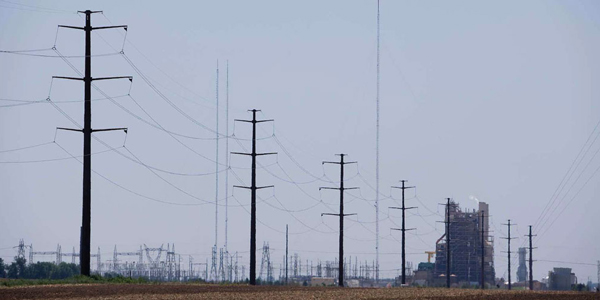By Tom Kleckner
FERC last week ordered settlement judge procedures over Westar Energy’s tariff revisions updating its transmission and distribution loss factors (ER18-1418).
“We find that Westar’s proposed tariff revisions raise issues of material fact that cannot be resolved based on the record before us,” the commission said. “Our preliminary analysis indicates that Westar’s proposed tariff revisions have not been shown to be just and reasonable.”
Kansas-based Westar is seeking to raise its loss factors from 3.07% to 3.47%, based on a study it performed using data and load-flow models from 2016 supplied by SPP. The current figure is a result of a 2013 settlement that locked it in for five years, with an updated study to be filed every succeeding five-year period.
Westar noted that the 2016 data reflect system losses lower than those recorded in 2014-2015 and 2017. It contended that customers would benefit from “locking in” lower loss factors for the next five years, given the settlement’s moratorium provision.
Kansas Electric Power Cooperative and the Kansas Power Pool protested, arguing that the increase and the underlying study were highly complex, “with numerous assumptions that must be understood and vetted.” They said the loss factors were inconsistent with known changes on Westar’s transmission system, pointing out the utility had spent more than $900 million in improvements between 2011 and 2016 that should “portend a decrease in transmission losses … not an increase.”
The two parties further alleged Westar’s study “inappropriately” excluded certain elements that would have lowered the estimated losses for 2016. They said that the utility had not demonstrated the reasonableness of including generator step-up losses in its calculation, nor its use of a top-down method for estimating certain losses while using a bottom-up method for others.
Westar responded that its previous study indicated losses of 3.65%, and that the current 3.07% mark was set by the 2013 settlement, noting that its loss factors do not include losses from generator step-up transformers. The utility contended that its treatment of state estimator losses is proper and that its study normalizes for conditions experienced on its transmission system.
The Nemaha-Marshall Electric Cooperative Association also intervened, saying it was concerned that Westar was incorrectly using annual peak load in applying the loss factors for the association’s wholesale distribution service charges, possibly leading to over-recovering facility service charges and associated losses.
In its reply, Westar countered that it uses the peak load for each facility in its losses calculation and the wholesale customer’s coincident peak when determining its share of the facility.





